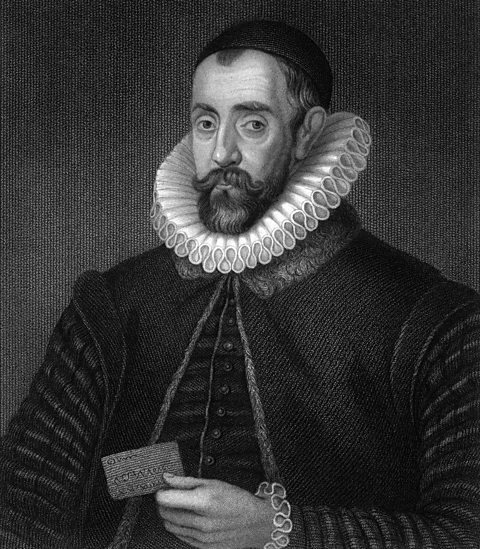Why was the Catholic threat greater by the 1580s?
There was broad support for the new Settlement and very few refused to take the oath of loyalty to the queen. By 1568 most people had accepted the new Church. Elizabeth’s tolerant approach seemed to have worked on the whole, but it did not keep everyone happy and she faced numerous threats. These intensified during the 1580s and there were a number of reasons for this.
- From 1568 Elizabeth’s cousin and rival, Mary, Queen of Scots was imprisoned in England. She had been overthrown by the nobleSomeone of high rank with a title. of Scotland and had escaped to England. CatholicThe Church in Western Europe before the Reformation. The Pope was head of the Church. A member of the Roman Catholic Church. saw Mary as the rightful queen of England.
- In 1570 the Pope produced a Papal BullA formal proclamation issued by the Pope. In 1570 Pope Pius V issued a bull excommunicating Queen Elizabeth from the Catholic Church. that said that Elizabeth was excommunicated (thrown out) of the Catholic Church and he ordered Catholics not to obey her. This meant that by the 1580s Elizabeth was under threat from the Catholic Church.
- From the mid 1570s newly trained Catholic priests began arriving in England and from 1580 onwards the Pope sent specially trained priests called Jesuits to aid them.
- In 1571 new treasonThe crime of betraying one's country, sovereign or government. Acts were passed which made it an offence to deny Elizabeth was the queen of England.
- In 1581 Parliament passed a new law against Catholics. Recusants (those who refused to attend church) had to pay a bigger fine of £20 per month and those who tried to encourage people to become Catholic could be accused of treason.
- In 1584 William of Orange, the leader of the Dutch ProtestantChristians who broke away from the Roman Catholic Church during the Reformation. They believe in the teachings of the Bible but reject the authority of the Pope. was murdered by a Catholic. Parliament responded by passing the Bond of Association. This stated that if Elizabeth was murdered, Parliament would make sure that the murderers were punished along with anyone who had benefitted from Elizabeth’s death.
- In 1585 war broke out between England and Spain. Parliament ordered all Catholic priests to leave the country within 40 days. If they were found in England after that time they would be executed.
English Catholics had a network of supporters abroad. Many of the missionary priests that arrived in the 1580s came from Douai in the Netherlands. Here they had been trained for English missions. In addition to support from the Netherlands English Catholics also looked to France and, more importantly Spain.
These Catholics were able to draw on their links and money abroad in order to plot against Elizabeth.
Catholic Plots
To strengthen her position, Elizabeth passed laws to minimise the Catholic threat. Despite these measures, a fear of Catholic plots was an on-going and serious threat.
The main figurehead for such plotters was Mary, Queen of Scots. She had a claim to the English throne, and was seen as a potential replacement for Elizabeth.
| Date | Plot | Elizabeth's action |
| 1583 - The Throckmorton Plot | A young Catholic man, Francis Throckmorton, organised a plan for a French army to invade England and replace Elizabeth with Mary, Queen of Scots, paid for by the Pope and King Philip II of Spain. | Throckmorton was executed and Mary was moved to Tutbury Castle in Staffordshire, where she was held in isolation and allowed no visitors. |
| 1586 - The Babington Plot | Sir Anthony Babington planned to rescue Mary, Queen of Scots from jail and murder Elizabeth. Secret letters between the plotters and Mary were discovered which gave the evidence needed to prove Mary’s guilt. | This finally led to the execution of Mary, Babington and six other plotters. |
| Date | 1583 - The Throckmorton Plot |
|---|---|
| Plot | A young Catholic man, Francis Throckmorton, organised a plan for a French army to invade England and replace Elizabeth with Mary, Queen of Scots, paid for by the Pope and King Philip II of Spain. |
| Elizabeth's action | Throckmorton was executed and Mary was moved to Tutbury Castle in Staffordshire, where she was held in isolation and allowed no visitors. |
| Date | 1586 - The Babington Plot |
|---|---|
| Plot | Sir Anthony Babington planned to rescue Mary, Queen of Scots from jail and murder Elizabeth. Secret letters between the plotters and Mary were discovered which gave the evidence needed to prove Mary’s guilt. |
| Elizabeth's action | This finally led to the execution of Mary, Babington and six other plotters. |
How were the plots discovered?

The Queen’s spymaster, Sir Francis Walsingham, had been intercepting letters from Mary, Queen of Scots for some time. He had a network of spies across Europe and was able to use these in order to protect Elizabeth from the Catholic threat.
These spies would post information about threats to the queen both from abroad and from within the country. Walsingham realised the importance of properly trained spies and set up a spy school in which to educate them. All spies had to learn how to decipher code and this was important in the discovery of the Babington Plot.